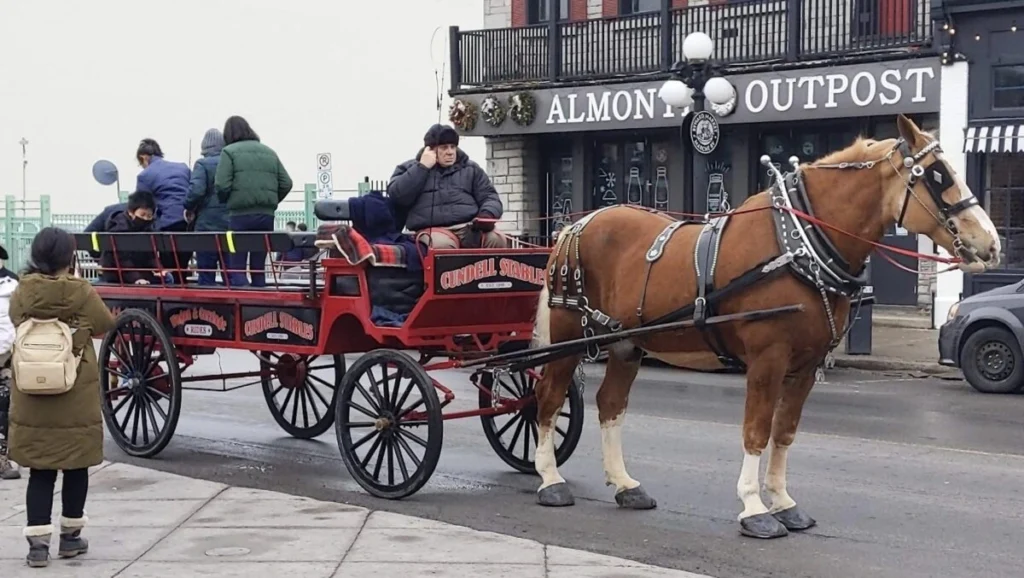It’s important to adapt and recognize the different modes of transport, especially horse-drawn vehicles, that exist on our roads as our world advances with technology and fast-paced lives.
Horse-drawn cars are a timeless, eco-friendly alternative to the honking of horns and hum of engines.
To share the road with horse-drawn vehicles, you need to have patience, understand them, and respect their historical heritage.
Consequences of Sharing the road with horse-drawn vehicles
It’s important to first acknowledge the historical significance of horse-drawn cars. The humble but sturdy carriages are a throwback to an age when the horsepower of an engine was measured by the power of an elegant horse. By embracing this coexistence between traditional forms of transport and modern cars, we pay tribute to the past while also fostering a feeling of unity across eras. The sound of hooves on the pavement is a constant reminder that the past and present are interconnected.
Sharing the road with horse-drawn transports may appear like a step back in time. In reality, however, this is a move towards a sustainable future. Equine-powered transports are zero-emission vehicles, which leave a much smaller carbon footprint than their motorized counterparts. The sight of a carriage pulled by horses is an eco-friendly reminder as we face the urgent issue of climate change. We can actively promote a sustainable mode of transportation by allowing these environmentally friendly alternatives to be used on our roads.

To adapt to the harmonious coexistence of horses and vehicles on the road, there are a few guidelines that must be followed. When sharing space with horse-drawn vehicles, patience is essential. These majestic animals move more slowly than automobiles. All road users must exercise patience and let the rhythmic hooves set the pace of their journey. We can all benefit from a calmer pace. It will not only make everyone safer, but it will also create a kinder and more considerate environment on busy roads.
Understanding the needs and behavior of horse-drawn vehicles will also help to create a cooperative and safe road environment. As sentient animals, horses may respond unpredictably when they hear loud noises or see sudden movements. Motorists must approach their equine friends with caution. They should reduce speed and maintain a safe space when they share the road. Driving with caution near horse-drawn vehicles not only promotes mutual respect between road users but also ensures safety for the horses and their handlers.
Signage and infrastructure are important in helping horse-drawn vehicle users seamlessly integrate into modern traffic. Signage and lanes that are visible can be used as a navigational tool for motorized and traditional road users. Horse-friendly features such as softer surfaces on intersections and rest areas are also important to ensure the safety of these amazing animals.
Campaigns of education and awareness are essential in creating a shared culture on the road. Enlightening people about horse-drawn vehicle’s environmental and historical aspects, as well as their practical applications, fosters a shared understanding of vehicles that go beyond the limits of technology and time. Informational campaigns, workshops, and community events can help create a society that is more aware and considerate, in which everyone has a part to play.
Conclusion
Sharing the road with horse-drawn transports is more than a nod towards our past. It’s a step forward in the direction of harmony and sustainability. We can create a road culture that is more considerate and inclusive by embracing historical significance, the environmental benefits, and the practical aspects of equine-powered transport. The cornerstones for a new road-sharing paradigm are patience, understanding, appropriate infrastructure, and education. This will help to foster a feeling of cooperation and unity among those who travel our interconnected and diverse roadways.
